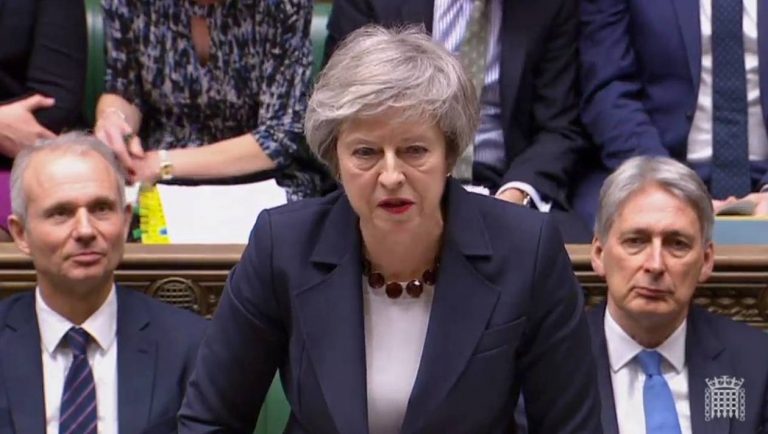Unable to reach an agreement on Brexit, Theresa May announced Friday 24th May, 2019 that she would leave 10 Downing Street on June 7th.
British Prime Minister Theresa May announced her resignation on Friday 24th May, 2019, following her failure to pass her plan to withdraw from the European Union.
The voice strangled by emotion, Theresa May said she would resign as head of the Conservative Party – and therefore government leader – on June 7th, in a speech at 10 Downing Street. She expressed, on the verge of tears, “a deep regret at not having been able to implement Brexit “.
Arrival in July 2016
Her voice broke as she finished her brief statement by proclaiming her “love” for her country, the leader masking the emotion that swept over her as she turned to head to her office.
Theresa May mandate as a crossroads as she has encountered adversity, criticism and even conspiracy within her own party will remain as one of the shortest in the history of British Prime Ministers since the World War II.
Before taking office, his successor will have to be elected to the head of the Conservative Party, then be officially appointed to the head of government by Queen Elizabeth II.
Former Foreign Minister Boris Johnson, Brexiters champion, is among the favorites to replace her.
Theresa May took over the executive in July 2016, shortly after the British voted 52 percent in favor of Brexit in the June 23, 2016 referendum, succeeding David Cameron.
But this 62-year-old pastor’s daughter, a former interior minister, has failed to rally behind her vision of the EU’s exit a deeply divided political class on the issue, like British society.
The divorce agreement, which she bitterly negotiated with Brussels, was rejected three times by MEPs, forcing the executive to postpone Brexit until October 31st, when it was originally scheduled for the 29th. March, and to organize the European elections in disaster.
The poll, held on Thursday in the United Kingdom, promises to be calamitous for the Tories, who finish at a humiliating fifth place (7%), 30 points behind the Brexit Party of Europhobic Sulfur Nigel Farage, according to a poll YouGov.
Read also: Brexit: the departure is getting closer for Theresa May who loses another minister
In a dead end
On Tuesday, Theresa May presented a “last chance” plan to try to regain control of this process.
In vain: the text was the subject of a flood of criticism from both the Labor opposition and eurosceptics of his own party, leading to the resignation Wednesday evening of the Minister in charge of relations with Parliament, Andrea Leadsom.
The bill, which Theresa May was scheduled to vote the week of June 3, was not included in the legislative program announced Thursday by the government to deputies.
The plan includes a series of compromises, including the possibility of voting on a second referendum and the continuation of a temporary customs union with the EU, in an attempt to rally the majority of MPs.
But by letting go of the ballast, Theresa May bristled the eurosceptics of her camp. The departure of Andrea Leadson has finished undermining the authority of Ms. May, who has seen the departure of some thirty members of his government over the months.
Still, the task of unraveling more than 40 years of ties with the EU was not easy, says Simon Usherwood, political scientist at the University of Surrey, interviewed by AFP. “Anyone in his position would have encountered great difficulties,” he adds. “History will not retain a favorable image of it,” he judges despite everything.




